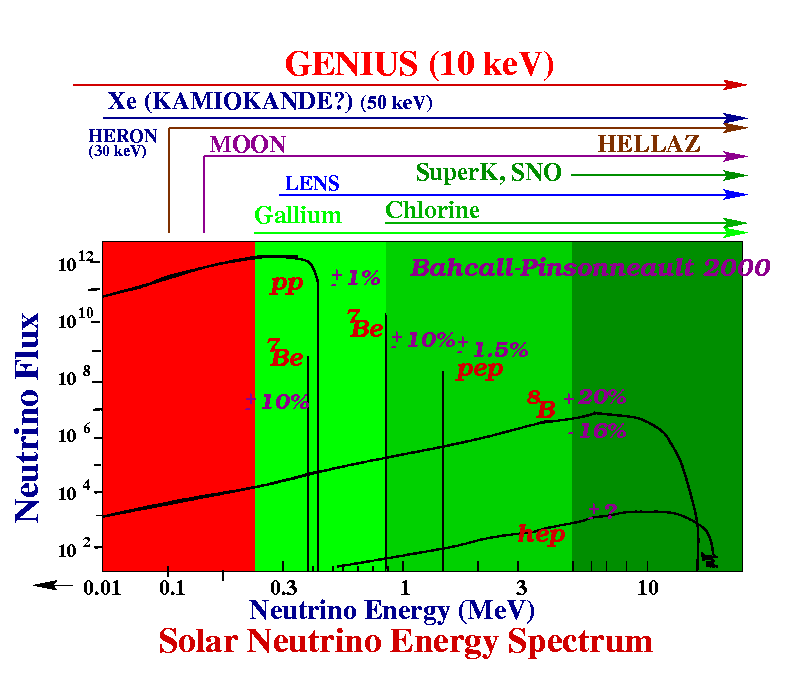SOLAR NEUTRINO EXPERIMENT
 GENIUS
GENIUS
The detection reaction is the elastic scattering process v + e- ---> v + e- . The maximum electron recoil energy is 261 keV for the pp-neutrinos and 665 keV for the 7Be-neutrinos. The energy of the recoiling electrons is detected through ionisation in high purity Ge detectors. GENIUS in its 1 ton version would consist of an array of about 300 HPGe detectors, 3.5 kg each. Thus, the sensitive volume would be naturally divided into 300 cells which helps in background discrimination, since a neutrino interaction is taking place in a single cell.
The dominant part of the signal in GENIUS is produced by pp-neutrinos (66%) and the 7Be-neutrinos (33%).
A target mass of 1 ton (10 ton) of natural or enriched Ge corresponds to about 3 x 1029 (3 x 1030) electrons.
With the cross section for elastic neutrino-electron scattering:
Gve = 59.3 x 10-46 cm2 for 7Be-neutrinos
and the neutrino fluxes:
FBe = 0.48 x 1010 cm-2 s-1
the expected number of events calculated in the standard solar model can be estimated:
Rpp = 35 SNU = 1.8 events/day (18 events/day for 10 tons)
R7Be = 13 SNU = 0.6 events/day (6 events/day for 10 tons),
GENIUS is conceived such that the external background from the natural radioactivity of the environment and from muon interactions is reduced to a minimum, the main background contributions coming from the liquid nitrogen shielding and the Ge detectors themselves.
In case of a day/night - variation of the solar neutrino flux, GENIUS would be sensitive to the LOW MSW solution of the solar neutrino problem.
GENIUS could be the first detector to detect the solar pp neutrinos in real-time.
Our Advantages: (now please have a look in to our
GENIUS-TF home-page
_______________

The GOOD energy resolution for detecting
the recoiling electrons would allow for the first
time to measure the 1.3 keV predicted shift
of the average energy of the beryllium neutrino line. This shift
is a direct measure of the central temperature of the Sun.
Comparing GENIUS to other new solar neutrino projects |
Already 1 ton GENIUS |
|
Counting rate |
|
|
|
|
|
|
Last modification (I.Krivosheina): 24/12/2007